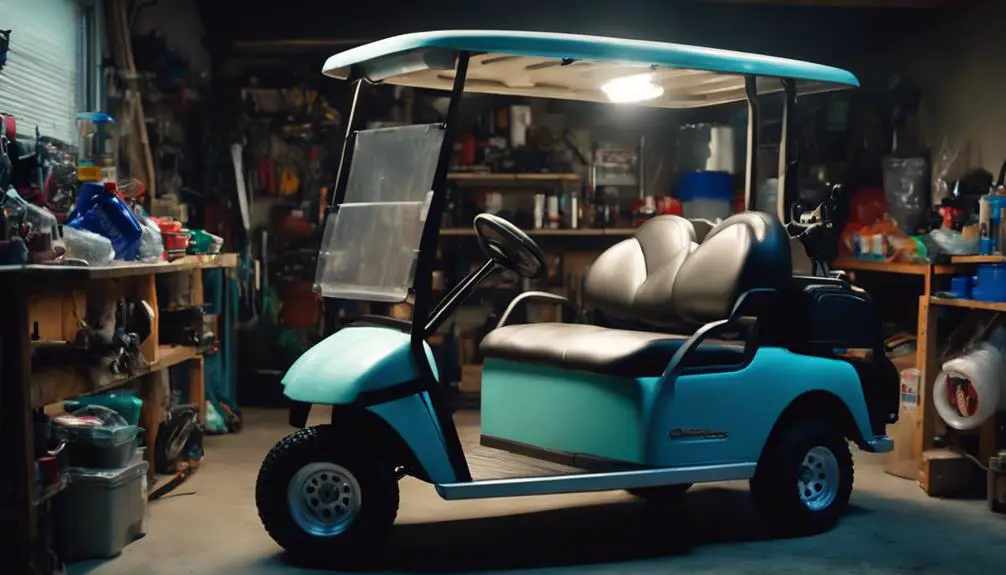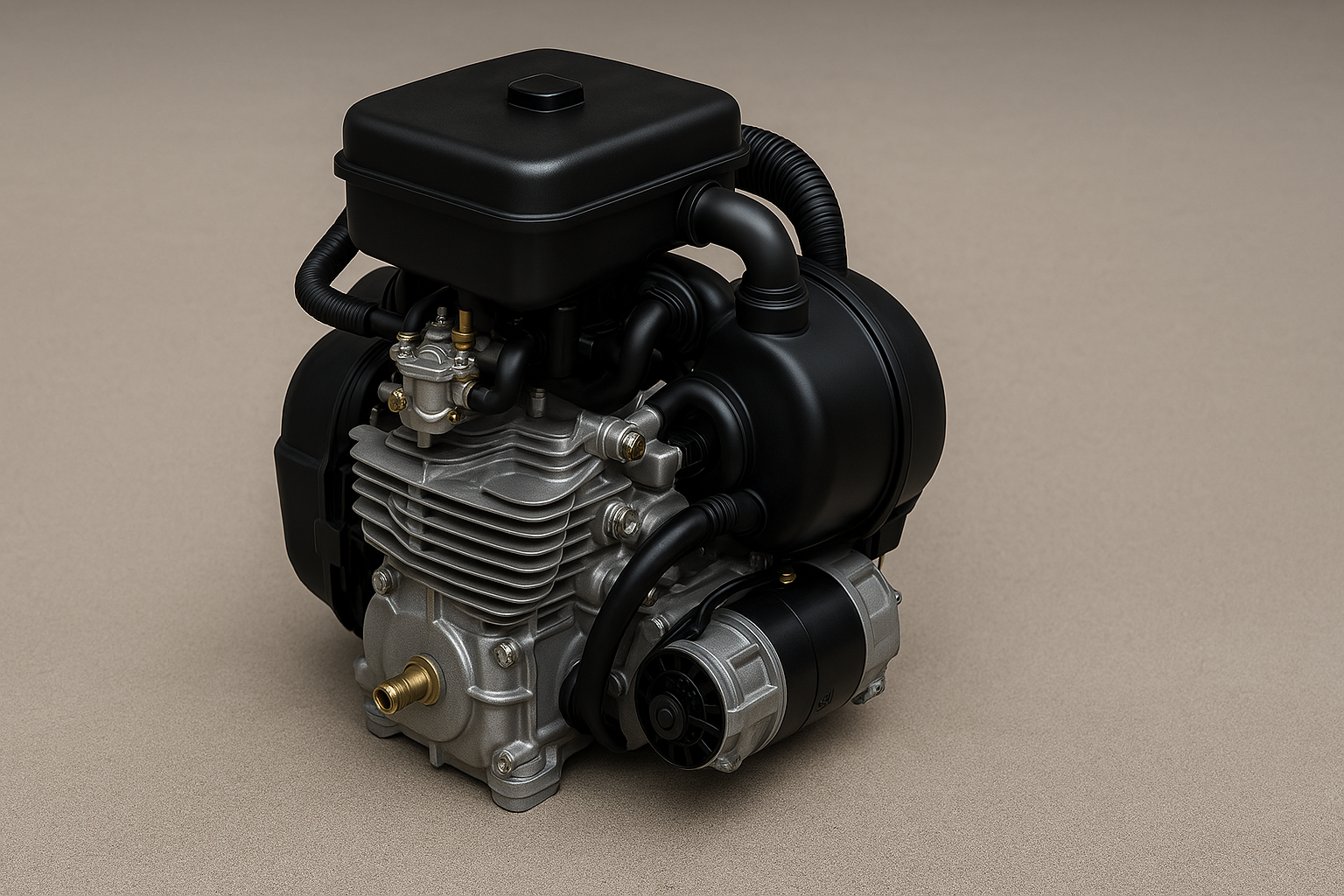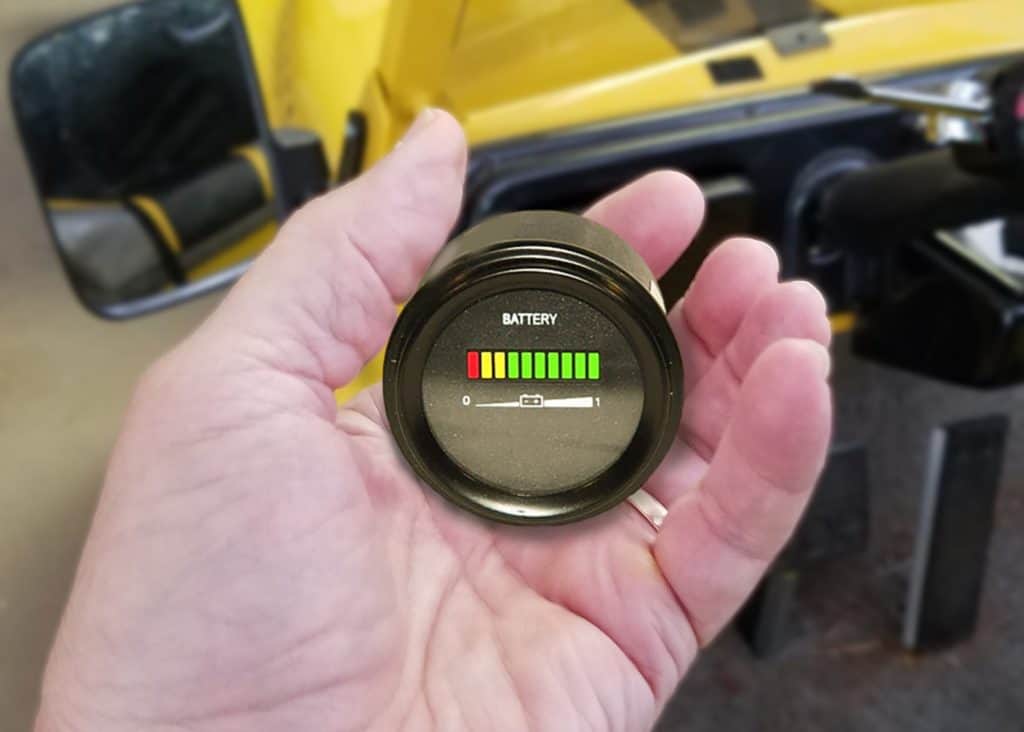As winter nears, it’s time to think about winterizing a golf cart. This process keeps your golf cart safe from the cold, snow, and other harsh elements. Doing this can make your cart last longer and work better. The steps to winterize can change if your cart runs on gas or electricity.
Choosing the right storage location is a key step. Preparing your batteries is also important. And don’t forget about protecting your tires and brakes. Each step is crucial. If you regularly check your cart and prepare it well for storage, it will work like a charm when spring comes.
Winterizing A Golf Cart Check List
Here’s a quick summary of the main tasks to ensure your golf cart is ready for its winter hiatus:
Key Takeaways
- Keep your golf cart in a safe, dry place. Use a strong shelter or high-quality cover for the best protection.
- Regularly look after the batteries. Keep them off the ground to avoid damage. Check their condition often.
- Make sure your golf cart is well-protected from the weather. Regularly check for rust or corrosion.
- Keep the tire pressure and brakes in good condition for the best performance. Think about extra safety measures like a steering wheel lock.
Why Winterize Your Golf Cart?
Failing to ready your golf cart for winter can lead to many complications. These can range from battery drain to tire damage, and even engine troubles for those using gasoline-powered carts.
The harsh cold can be relentless, leading materials to shrink and liquids to freeze. This can trigger expensive repairs or replacements. Conversely, taking the effort to winterize your golf cart can extend its lifespan, protect its value, and ensure it’s set to go when the warm weather returns.
Choosing the Right Storage Location
Choosing the right storage location for your golf cart in winter is key. It shields your cart from harsh weather, preventing damage. The location must be dry and safe from water exposure. Both electric and non-electric golf carts need this protection.
Consider a golf cart storage shed for top-notch protection. This enclosed space keeps winter elements at bay. It helps your cart stay in great shape. If there’s no shed, a sturdy shelter can offer good protection. It should be able to keep off heavy snow or constant rain.
If a shed or shelter isn’t handy, a golf cart cover is essential. It may not be as protective as a shed or shelter, but it helps. It keeps your cart safe from direct touch with winter elements. The cover should be waterproof and fit well over your cart.
No matter the method, it’s crucial to protect your golf cart in winter. The right storage safeguards your investment. It makes your cart last longer and keeps its batteries in good shape. Plus, your golf cart will be ready to use when it’s warm again.
Preparing Your Golf Cart’s Batteries
After securing your golf cart in a snug winter spot, the next move is careful prep of the cart’s batteries. This step is key to keeping your vehicle in top shape during the chilly season. Whether your golf cart uses lithium batteries or lead-acid batteries, each kind needs special care when in winter storage.
Lithium batteries are handy for winter storage because they have a low discharge rate of about 2% per month. In contrast, lead-acid batteries can run out of power if you don’t keep a close eye on them and take care of them right.
Keep your batteries in good shape with these steps:
- Check on them often: Look at lithium batteries every 3 months and lead-acid batteries every 2-3 weeks when in winter storage.
- Use batteries that don’t lose power fast: For instance, the RELiON InSight 48V battery loses only 2.8% of its power per month, so you don’t have to charge it often.
- Keep batteries off the ground: A wooden pallet or shelf is a good place to keep batteries during winter storage.
Follow this battery care guide to ensure a seamless transition into the next golf season.
Protecting Your Cart From Weather
To defend your golf cart from harsh winter weather, it’s crucial to store it properly. You need a dry, well-ventilated garage or shed to protect your cart from moisture and freezing temperatures. Proper storage of your golf cart helps prevent immediate and long-term damage like rust and corrosion.
Besides storing it in a well-ventilated space, a high-quality cover is useful. This can shield your cart from dust, moisture, and sunlight, especially if storing it outside is your only choice. The cover should be tough, waterproof, and fit your golf cart tightly, giving it full protection from the weather.
Putting in time and effort to protect your golf cart can make it last longer. By stopping mold and rust, you’re making sure your golf cart remains useful for a long time. Remember, preparing for winter isn’t just about getting through this winter. It’s also about making your cart last for many more winters.
Maintaining Tires and Brakes
Golf cart upkeep is crucial, especially for its tires and brakes. As winter nears, inspect these parts. Ensuring they’re in top shape is vital for safety and efficiency.
Here’s the regular upkeep plan:
- Watch the tire pressure: Proper tire pressure is key for the best performance. Look for wear signs, like uneven tread or bald spots. Rotate the tires sometimes to make them last longer.
- Check the brakes: Follow the manufacturer’s advice for brake care. This keeps your golf cart safe and working well. Think about getting better brake pads for stronger stopping and longer life.
- Safety inspection: Often look over the batteries and cables. This prevents breakdowns and helps your cart live longer.
Securing and Covering Your Cart
After looking at the tires and brakes, it’s crucial to properly secure and cover your golf cart for winter. The first key step is to find a good storage location. This should be a dry place protected from bad weather. It can help stop damage from the elements.
To give your golf cart more protection, think about buying a good golf cart cover. A strong, water-resistant cover can stop dust, debris, and moisture from getting into your cart. This can lower the risk of rust and corrosion. Plus, a cover can guard your cart from harmful UV damage. This can lead to fading and other damage to its look.
An important step we often forget is to raise the tires off the ground. This stops flat spots from forming when the cart is not being used for some time. A steering wheel lock or just taking out the key can help stop theft.
Lastly, make sure to do regular check-ups. Look out for signs of pests, moisture buildup, or changes in tire pressure. These steps will help keep your golf cart in top shape during the winter.
Frequently Asked Questions
Does a Golf Cart Need to Be Winterized?
Winterizing is part of taking care of your cart when you’re not using it. It helps protect the cart’s parts from things like moisture and frost. Storing your cart the right way can also stop tires from wearing out and keep rust away.
How Do I Prepare My Golf Cart for Winter?
Find a dry place for storage to stop moisture from causing harm. Use seat covers and protect your windshield to guard against the cold.
Clean your cart thoroughly, with particular focus on the brakes and engine. Look over the frame for any signs of damage. Use anti-freeze if needed.
Silica packs can help keep moisture under control and protect your cart.
Should I Leave My Golf Cart Plugged in All Winter?
Instead, think about trickle charging in the right conditions or look into other storage options. Regular care can help stop long-term damage and improve how your cart works. Always follow the maker’s instructions for getting your vehicle ready for winter. This helps ensure your golf cart lasts a long time.
Should You Disconnect Golf Cart Batteries for Storage in Winter?
Now, lithium batteries are a bit different. They have a lower discharge rate, so you don’t need to disconnect them. When you want to use your batteries again, follow the right steps to reconnect them. Also, don’t forget to follow the guidelines given by the manufacturer. They will help you fight the effects of winter.





